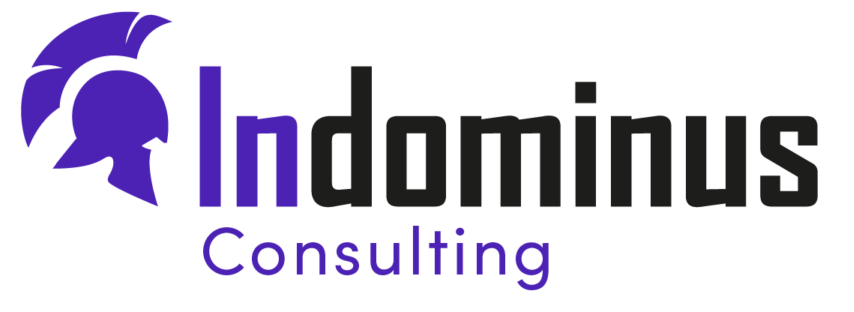How to Find Digital Transformation Success From Repetitive Tasks
The leaders of a software development company wanted to proceed with a digital transformation by moving all of their services to the cloud. They took all the services they had deployed on their internal servers and moved them to a similar cloud configuration. They used a typical “lift and shift” approach.
The company’s supplier cooperated and gave the customers what they requested. However, in the end, the monthly server bill was higher, which did not meet the customers’ expectations.
Was the supplier at fault? No.
The role of a supplier is to give the customer what he wants and to bill him accordingly. The supplier will not necessarily ensure that the customer makes the right decisions. By completing a sale, the supplier fulfills his role.
When purchases of physical servers dominated the IT landscape, this was an appropriate approach. However, a digital transformation—the word indicates it—implies a significant change. It’s more than just a server move.
Digital transformation success requires a new way of thinking
The goal of a digital transformation is to generate value by focusing on the customer. In other words, there must be a substantial return on investment. A digital transformation requires clear intent; otherwise, it ends up as a net expense.
When you work with a partner instead of a vendor, the partner’s role is to educate you, the customer. The partner needs to understand the limitations and capabilities of their product to explain to you:
- The platform’s possibilities. In general, a cloud-computing platform offers more capabilities than an in-house server.
- How to rethink your application services. A digital transformation to the cloud requires rethinking the way services are created and used. Cloud infrastructure integrates services that the customer does not need to recreate.
- How to modify existing services to make the most of what the cloud computing platform has to offer.
- How to review processes to transform those that are costly to the client. In particular, the partner will target manual processes that bring little value to the company—or worse, they cause profit leakage.
- Optimize security to avoid losses due to cyberattacks. Cyberattacks often exploit security weaknesses in a client-server environment. In a cloud-based approach, these security services are already in place, reducing the risk of breaches. It is not a panacea, but part of the responsibility no longer rests on your shoulders.
- By taking full advantage of cloud computing services for your digital transformation, you can significantly simplify the systems you need to manage while providing better service to your customers.
Digital transformation success benefits the customer, not just the supplier
A digital transformation must result in substantial and measurable gains for the customer. Before proceeding with such a transformation, work with your partner to identify ROI opportunities. These opportunities can include:
A reduction in licensing costs. With a cloud computing installation, the number of licenses may be reduced because you will need fewer servers to perform the same task.
Reduced server costs. Rather than purchasing servers whose performance declines over time, a digital transformation relies on the cloud service provider to update hardware. As a result, performance improves over time without you having to make massive investments. It is a rental model rather than an acquisition model.
Through automation, staff wastes less time performing manual tasks. Instead, they can focus on activities of greater value to the business.
More benefits to the business by spending less time managing system updates and more time on the core applications.
In a cloud computing model, administrative tasks such as updating the operating system, installing security patches, and other repetitive system administrator tasks are handled by the service provider. Programmed automation can handle mundane and repetitive tasks, allowing staff to devote their time to activities that generate more revenue for the company.

Digital transformation success through automation of repetitive tasks
The automation of repetitive tasks, known as RPA (robotic process automation), is a form of artificial intelligence. A basic model is created and trained to excel at a specific task. It is the equivalent of industrial automation, but applied to business.
This approach is most valuable when it automates a time-consuming task that brings little benefit to the company. RPA frees up staff to do supervisory or verification tasks rather than data entry.
A successful implementation of RPA offers the following advantages:
- Frees up human time and optimizes it with machine time;
- Reduces data entry errors due to distraction or lack of attention;
- Performs tasks at the same speed at all times;
- Provides 24-hour availability at no additional cost;
- Automates some processes in their entirety, leaving only periodic supervision to staff members;
- Provides tools that anyone can use to automate tasks without having to write code and without being a trained developer;
- Generates benefits in cost reduction or increased revenues that pay for a portion of the digital transformation.
If you are the owner of an SMB, how can the implementation of RPA help your company? Here are some applications.
Using RPA for digital transformation success in SMBs
In a small or medium business, repetitive manual tasks are an easily overlooked waste of resources which results in reduced productivity. These tasks are often necessary to keep the business running but offer little value for the effort they require.
RPA can help to reduce this waste.
Automated resume processing
One SMB was receiving dozens of resumes a day. To determine which ones were appropriate, an individual had to check the email inbox, look at the resumes, and sort them appropriately. This work could take several hours a week, especially during recruitment periods.
To solve the problem, we set up an RPA using Microsoft’s PowerAutomate (formerly Flow) tool. The new automated process monitors a dedicated email box. Each time an email arrives, the tool analyzes it, extracts the CV, and deposits the CV in a SharePoint database. A notification is then sent to the person responsible for hiring.
In addition to saving time, the system allows for keyword searches to retrieve specific resumes for a job opening. It also allows HR to see the progress of candidates when they send updates to their resumes.
Automated processing of user accounts
User account management can be a never-ending puzzle in a company that uses several systems, each of which requires a user ID. We often see the same types of problems: the user ID is different in all systems; typos occur when entering data; varying access rights to different systems hobble new employees.
These problems occur when the process is not standardized or is not followed to the letter by the team setting up a new user account. To solve the problem, we automated the addition and removal of accounts using Microsoft’s automation tools.
When hiring a new employee, the RPA creates all the required accounts according to the employee’s profile. From his first day on the job, the employee has all the access he needs and can be up and running immediately.
When the employee leaves the company, the RPA disables all user access and informs the manager that the user account will be destroyed in one week. It is up to the manager to take the necessary measures to keep the user’s important data.
This system has standardized the addition and removal of accounts, reduced errors and omissions, and saved the company time and money.
Automated invoice entry in the accounting system
In a small business that receives between 200 and 400 invoices to manage every month, an RPA performs the following tasks:
Checks the mailbox where the invoices arrive.
Automatically recognizes the supplier and inserts the invoice data into the billing system.
Proceeds with payment before the due date.
In the end, finance team members can use their talents to provide better customer service.
⦁ ⦁ ⦁
Before blindly proceeding with a digital transformation that could prove costly without giving you the expected benefits, contact us. We will take the time to listen to you, understand your situation, and propose a solution that will meet your company’s vision and provide you with benefits that will finance your digital transformation success.

